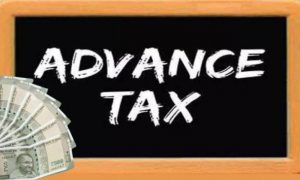ITR Filing 2024: You can file an ITR on your own. However, if you are not comfortable, you can also seek help from a tax professional.
Income Tax Return Filing AY 2024-25: Selecting the correct income tax return (ITR) form holds significant importance for both individuals and businesses. It ensures adherence to tax laws, minimising the likelihood of penalties or legal issues. Tailored to various taxpayer categories, including individuals, businesses, and organisations, each ITR form collects pertinent details on income, deductions, exemptions, and tax obligations.
Furthermore, utilising the appropriate form enables taxpayers to leverage tax advantages and deductions tailored to their income streams and classification, potentially reducing their tax burden and optimising savings. Moreover, employing the correct form facilitates efficient processing by tax authorities, reducing the occurrence of delays and inquiries. It also expedites the issuance of any applicable tax refunds.
Read More: Income Tax Return Filing 2024: Who Is Eligible To File ITR 1 Form? Check All Details Here
Today, we bring here the difference between ITR 1 Sahaj and ITR 4 Sugam.
Income tax return forms have already been notified for Assessment Year 2024-25 (for income earned in 2023-24).
Income taxpayers can now start filing their ITR for the financial year 2023-24 (or assessment year 2024-25) as the income tax department has enabled online filing of ITR-1, ITR-2 and ITR-4. These forms are meant for individuals, professionals and small businesses.
In February 2023, CBDT also made certain changes in the ITR-1 form about disclosure under Section 139 (1), which is filed voluntarily by persons having annual taxable income of less than Rs 2.5 lakh. These individuals will not be required to intimate in their ITR forms even if their fixed deposits exceed Rs 1 crore.
Read More: What is Section 80DDB? Know tax benefits for specific medical expenses: 5 top points
ITR-1 and ITR-4 are simplified forms designed to accommodate a broad spectrum of small and medium-sized taxpayers.
ITR 1 Sahaj
ITR-1 can be filed by an individual having income up to Rs 50 lakh and who receives income from salary, one house property and other sources (interest, etc). ITR-4 can be filed by individuals, Hindu Undivided Families (HUFs) and firms with total income up to Rs 50 lakh and having income from business and profession.
Who is eligible to file ITR-1 Sahaj?
According to the IT department, ITR-1 can be filed by a resident individual whose:
- Total income does not exceed Rs 50 lakh during the FY
- Income is from salary, one house property, family pension income, agricultural income (up to Rs 5000), and other sources, which include:-Interest from Savings Accounts-Interest from Deposits (Bank / Post Office / Cooperative Society)-Interest from Income Tax Refund-Interest received on Enhanced Compensation
- Any other Interest Income
- Family Pension
- Income of Spouse (other than those covered under Portuguese Civil Code) or Minor is clubbed (only if the source of income is within the specified limits as mentioned above).
What Documents Do You Need To File ITR-1?
You would need Form 16, house rent receipt (if applicable), and investment payment premium receipts (if applicable). However, ITRs are annexure-less forms, so you are not required to attach any document (like proof of investment, TDS certificates) along with your return (whether filed manually or electronically). However, you need to keep these documents for situations where they need to be produced before tax authorities such as assessment, inquiry, etc..
Read More: New Tax Regime Vs Old Tax Regime In AY2024-25: Which Income Tax Regime Is Beneficial For You?
ITR 4 Sugam
Who is eligible to file ITR-4?
ITR 4 is for resident individuals, HUFs and firms (other than LLP) having total income up to Rs 50 lakh and having income from business and profession which is computed under Sections 44AD, 44ADA or 44AE and agricultural income up to Rs 5,000.
ITR-4 can be filed by a Resident Individual / HUF / Firm (other than LLP) who has:
- Income not exceeding Rs 50 Lakh during the FY
- Income from Business and Profession which is computed on a presumptive basis u/s 44AD, 44ADA or 44AE
- Income from Salary/Pension, one House Property, Agricultural Income (up to Rs 5000/-)
- Other sources include (excluding winning from Lottery and Income from Race Horses):-Interest from Savings Account-Interest from Deposit (Bank / Post Office / Cooperative Society)-Interest from Income Tax Refund-Family Pension-Interest received on enhanced compensation-Any other Interest Income (e.g., Interest Income from an unsecured loan)
What documents do you need to file ITR-4?
You will need to keep the below documents ready (as applicable) to file ITR-4:
-
- Form 16
- Form 26AS & AIS
- Form 16A
- Bank Statements
- Housing Loan Interest Certificates
- Receipts for Donations Made
- Rental Agreement
- Rent Receipts
- Investment premium payment receipts – LIC, ULIP, etc
For more details, taxpayers can check the official portal of the IT department (https://www.incometax.gov.in/iec/foportal/help/e-filing-itr4-form-sugam-faq).
How To File ITR Online?
To file your ITR, you will need to gather all the necessary documents and information. You can then visit the Income Tax Department’s e-filing website (https://www.incometax.gov.in/iec/foportal/) and follow the step-by-step instructions to file your return online.
You can file an income tax return on your own. However, if you are not comfortable with filing your ITR, you can also seek help from a tax professional. However, it is important to note that there may be a fee for using these services.
Taxpayers should keep a record of all the documents filed with the tax authorities for future reference. Once you have all the necessary documents and information ready, you can file your ITR either offline or online through the Income Tax Department’s e-filing website (https://www.incometax.gov.in/iec/foportal/).



































